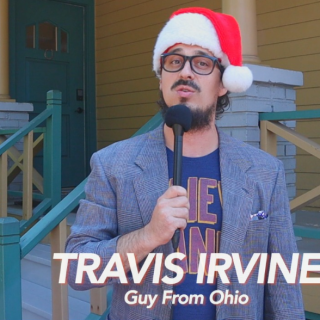In 1990, in the Badlands of South Dakota, a team of paleontologists found the biggest and most complete Tyrannosaurus rex fossil that had ever been discovered.
Then, about two years later, all hell broke loose.
It sounds like the plot of a new Jurassic Park sequel, but it’s actually the description of Dinosaur 13, a documentary by Columbus native Todd Douglas Miller. If you think big government poses more of a potential threat than a big, extinct carnivore, you’ll find it scarier than anything Steven Spielberg could have dreamed up.
The team was led by brothers Peter and Neal Larson and included Susan Hendrickson, the first person to stumble upon the fossil. According to the participants’ accounts of that fateful August day, they instantly realized the momentousness of their discovery.
Over the next couple of weeks, they carefully unearthed the giant fossil and began carting it back to their headquarters at the Black Hills Institute of Geological Research in Hill City. There they began the painstaking task of separating the pieces from each other and the surrounding rock.
“Sue”—as they’d named the T. rex in Hendrickson’s honor—soon became a celebrity in Hill City. Local schoolchildren were invited to inspect her fossilized bones, and her discoverers planned to make her the centerpiece of new paleontology museum that promised to put their tiny community on the map.
Then, about two years into Sue’s restoration, the FBI came a-knocking. A small army of agents and National Guardsmen barged in and proceeded to seize the dinosaur on the grounds that it had been stolen.
It seemed the Larsons had wandered into a legal quagmire. They’d found Sue on land belonging to a member of the Cheyenne River Sioux tribe, and they’d dutifully paid him $5,000 for their find. However, he now denied the sale. Furthermore, due to the obscure arrangement under which he’d obtained the land, any such sale would have had to be approved by the federal government.
Through a combination of interviews, archival footage and re-enactments, filmmaker Miller examines both the complicated legal issues and the emotions they unleashed.
The residents of Hill City reacted to Sue’s seizure as if a beloved neighbor were being kidnapped. Adults and children alike protested by waving picket signs and chanting “Shame on you” as agents began loading Sue into trucks and hauling her away.
For the Larsons and their team, the nightmare was just beginning. Even though a tribal court dismissed the original claim, a zealous prosecutor refused to let the issue die. The Larsons’ institute eventually became the target of the largest court case ever tried in the state of South Dakota.
Remember what happens in Jurassic Park when the reconstituted dinosaurs run amok? Dinosaur 13 is an equally terrifying portrait of a justice system run amok.
It’s hard to tell a story this complicated without leaving a few stones unturned, and viewers may find themselves with a question or two at the end. For the most part, though, Miller tells his horrific tale flawlessly and exhaustively. He’s aided immensely by the sensitive score, which is provided by Columbus-based musician Matt Morton.
If the test of a good muckraking documentary is whether it leaves the viewer riled up and ready to tilt at windmills, this film passes.
Rating: 4 stars (out of 5)
Dinosaur 13, rated PG, opens Friday (Aug. 15) at the Gateway Film Center in Columbus.



